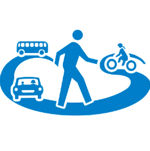Street Smarts
 There’s more to streets than typically meets the eye. Rather than think of them as movers of cars, we ought to recognize them as a connectors of people and places, and of commerce and communities. We should start to see them for their potential as either a health asset or impediment, depending on their design and structure.
There’s more to streets than typically meets the eye. Rather than think of them as movers of cars, we ought to recognize them as a connectors of people and places, and of commerce and communities. We should start to see them for their potential as either a health asset or impediment, depending on their design and structure.
On July 2 Phoenix City Council formally passed two related Complete Streets ordinances, committing the city to developing solutions that welcome all users (pedestrians, cyclists, transit riders and motorists) of all abilities (including those for whom driving isn’t an option). The Arizona Republic has done a great job covering Complete Steets, and it just published a compelling editorial following the council approval. The next step is to establish a Citizens Advisory Board that in turn helps to create design standards and practices for implementation.
Complete Streets aren’t new. They’re just new to Phoenix. More than 600 cities and towns across the U.S. have already adopted Complete Streets policies. Universally, changes have been planned within the context of the people, neighborhoods, businesses and amenities being connected.
People with streets smarts recognize that roads are a health asset that’s literally right under our feet. Don’t assume that every Phoenix street will have a bike lane one day, because that’s not the idea. But do assume that Phoenix street designs are about to get smarter, and create more livable communities in the process.